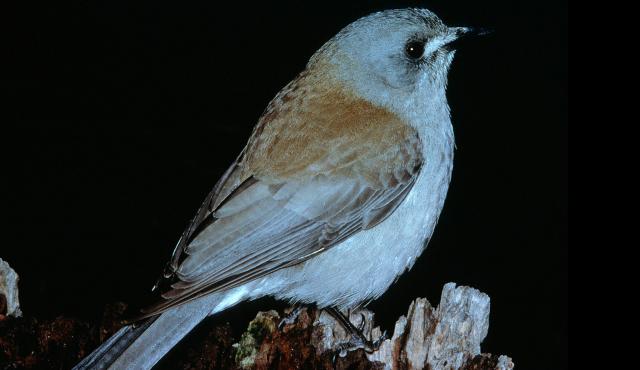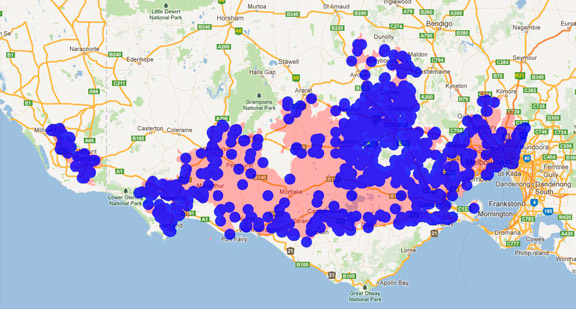A range of teacher professional learning programs will be developed to accompany the Biodiversity of the Western Volcanic Plains online outreach...

Grey Shrike-thrush
Colluricincla harmonica
Breeds July-February. Pairs generally remain together in the same area. A large cup nest is constructed 2-6 m high in a tree cavity, fork, vine, or in sheds or hanging baskets. Both male and female share in nest building and raising the young.
| Details | Description |
| Type | Bird |
| Group | Whistler |
| Identifying Characteristics | |
| Distinctive Markings | Grey with an olive-brown back. |
| Diet | Omnivore, feeding on invertebrates, small mammals, frogs, lizards, mammals, birds' eggs and young. Fruits and seeds may also be eaten. |
| Habitat | Eucalypt forests, woodlands, coastal scrubs, mallee, watercourses, parks and gardens. |
| Native Status | Native to Australia |
| Sounds | A very rich and melodic set of calls including ringing whistles and musical notes "quorra-quorra-quorra, whieet-chiew". |
| Taxonomy | |
| Phylum | Chordata |
| Class | Aves |
| Order | Passeriformes |
| Family | Pachycephalidae |
| Genus | Colluricincla |
| Species | harmonica |

Distribution maps indicate current and historic locations where species have been sighted.
Source: Atlas of Living Australia
| Conservation Status | |
| DEPI Advisory List | Not listed |
| FFG Act | Not listed |
| EPBC Act | Not listed |
The conservation status of species is listed within Victoria and Australia.
The Department of Environment and Primary Industry (DEPI) Advisory List consists of non-statutory advisory lists of rare or threatened flora and fauna within Victoria.
The Flora and Fauna Guarantee Act 1988 (FFG Act) lists threatened species in Victoria. Under the Act, an Action Statement is produced for each listed species.
The Environment Protection and Biodiversity Conservation Act 1999 (EPBC Act) is the Australian Government’s key piece of environmental legislation, listing nationally threatened native species and ecological communities.



